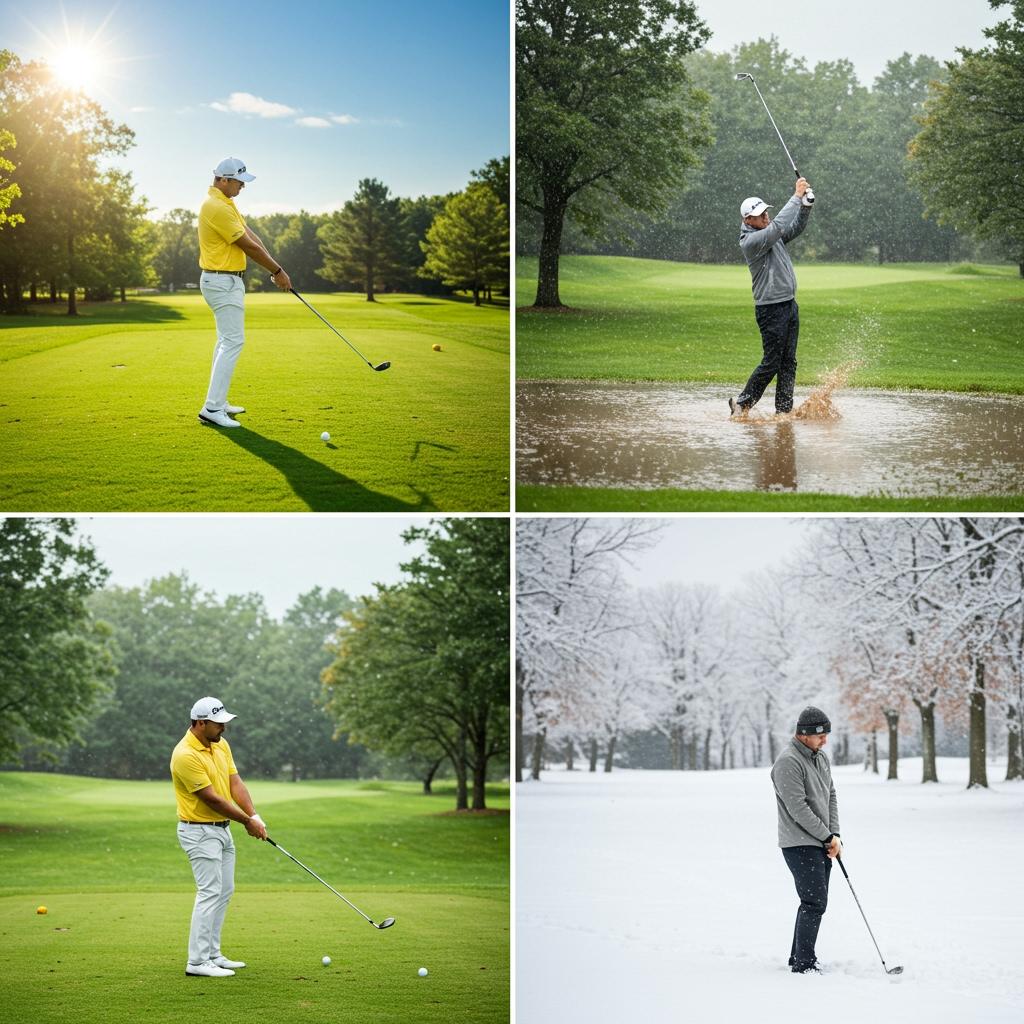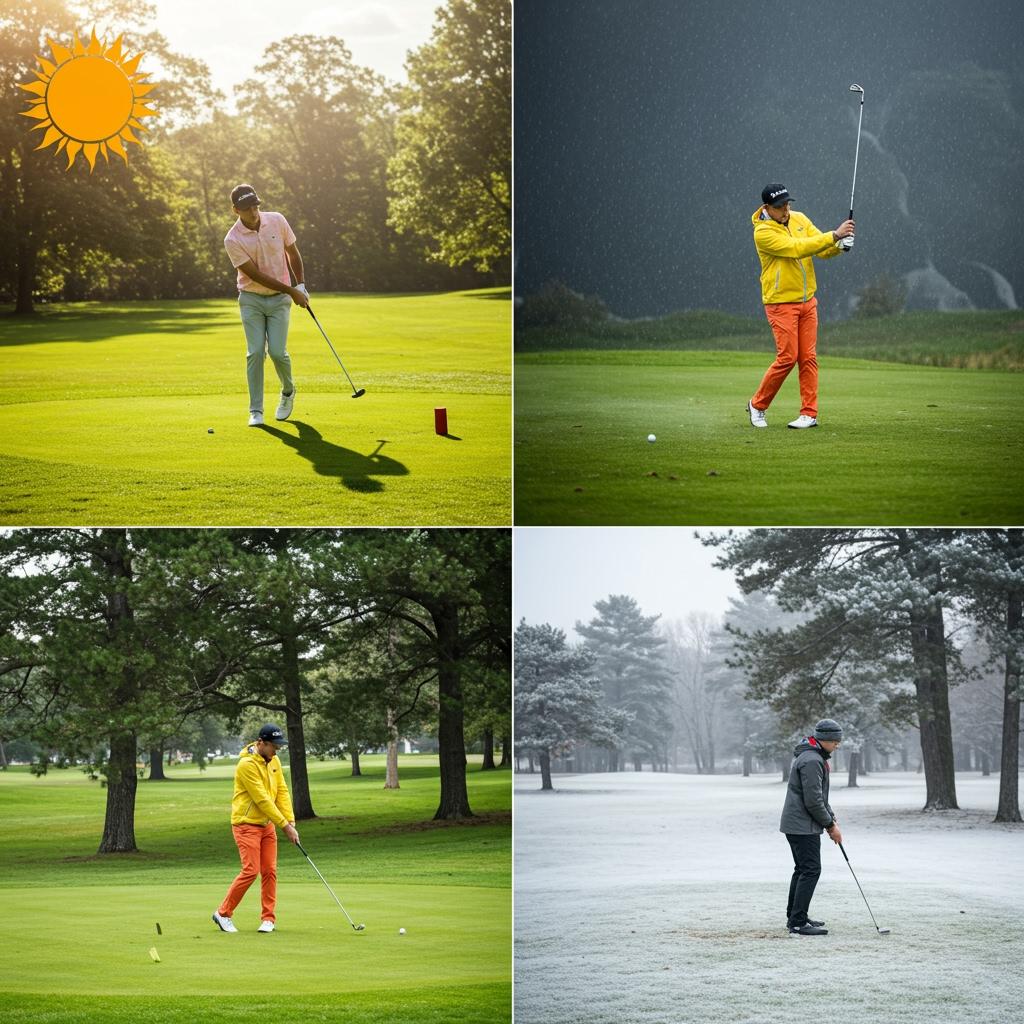Playing Golf in Different Weather Conditions: A Strategic Guide
Golf is a game greatly influenced by weather. Understanding how different weather conditions affect your game and adapting your strategy accordingly is crucial for improving your score. This guide provides practical tips and strategies for playing golf in various weather scenarios.

Hot and Sunny Weather
Playing golf in hot and sunny conditions requires careful planning and execution. Dehydration is a major concern, so drink plenty of water before, during, and after your round. Wear light-colored, breathable clothing and a hat to protect yourself from the sun. Consider using sunscreen with a high SPF to prevent sunburn. The heat can also affect your energy levels and concentration, so pace yourself and take regular breaks in the shade. Strategically, hot weather can impact the course conditions. The ball may roll further, and greens may be firmer and faster. Adjust your club selection accordingly, opting for shorter clubs to prevent overshooting greens and accounting for increased ball roll. Be mindful of the increased risk of heatstroke.

Rainy Weather
Playing in the rain requires different considerations. First and foremost is safety. If there's lightning, immediately seek shelter. Appropriate rain gear is essential, including waterproof jackets and trousers. A waterproof golf bag will also protect your clubs and valuables. Gripping the club can be more challenging in wet conditions, so consider using a slightly more aggressive grip to maintain control. The ball will travel shorter distances due to the increased drag created by the rain and the wet turf. You should also account for the impact of rain on the greens, which will likely become softer and slower. Adjust your club selection and putting strategy accordingly. Be prepared for slower play as players will take their time during rainy weather.

Windy Weather
Wind significantly impacts shot trajectory and distance. Understanding wind direction and speed is crucial for accurate shotmaking. Before you hit, visually assess the wind's strength and direction. Consider using a wind meter if available. On windy days, focus on shot placement and control over distance. Aim to keep shots low to minimize the wind's effect on your ball flight. Use a lower trajectory for tee shots. It is essential to remember that wind also affects putting. It can cause the ball to break unexpectedly, so accounting for this is critical. For example, a strong headwind will likely cause a putt to decelerate and finish short of the hole. Conversely, a tailwind might cause it to overshoot. Practice reading the wind's influence on your putts.
Cold Weather
Playing golf in cold weather requires appropriate clothing to stay warm and comfortable. Layers are crucial, allowing you to adjust to changing conditions. Wear waterproof and windproof outer layers, along with insulating mid-layers and moisture-wicking base layers. Cold temperatures can affect your grip and flexibility, so take some time to warm up before starting your round. Cold weather also tends to influence the course conditions, affecting both your ball flight and the course itself. The greens may be slower and the air denser, affecting distance and accuracy. Be sure to consider this factor when planning your shots. If possible, loosen up your joints before teeing off in order to improve flexibility and range of motion.
Conclusion
Adapting your golf game to different weather conditions is vital for improving your score and enjoyment. By understanding the impact of each weather type and following the strategic tips above, you can optimize your performance no matter what the weather throws your way. Remember to prioritize safety and always adjust your strategy to suit the specific conditions of the day. Enjoy the challenge and have fun out on the course!
Comments
Post a Comment